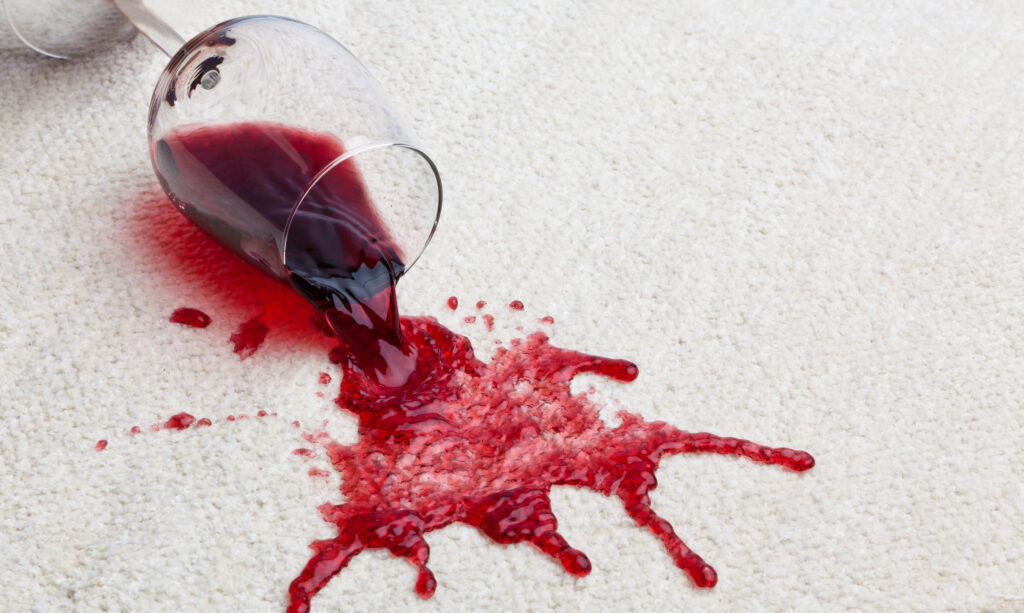The Science Behind Carpet Stains and Why Timing Matters
Carpet stains are an inevitable part of life. From coffee spills to muddy footprints, your carpet endures a lot. But have you ever wondered why some stains seem impossible to remove while others vanish with just a quick dab? The answer lies in the science behind carpet stains and why timing plays a critical role in effective carpet stain removal. In this post, we’ll explore the chemistry of stains, how carpet fibers react, and why immediate action can make all the difference.
Understanding the Basics: What Is a Carpet Stain?
A stain is essentially a discoloration caused by the chemical interaction between the staining agent and the carpet fibers. Unlike dirt or dust, which can typically be vacuumed away, stains chemically bond with the fibers. The longer the staining agent sits, the stronger the bond becomes, making removal significantly harder.
There are two main types of stains:
1. Water-based stains – Includes juice, wine, soda, coffee, and most food spills.
2. Oil-based stains – Includes grease, makeup, lotion, and some inks.
Each type requires different removal strategies, and understanding the nature of the stain is the first step in carpet stain removal.
The Chemistry of Carpet Stains
Carpets are typically made from synthetic fibers like nylon, polyester, or olefin, and sometimes from natural fibers like wool. Each of these materials reacts differently to various chemicals. Here’s a breakdown:
Nylon: Strong and durable but prone to acid-based stains.
Polyester: Resists water-based stains but holds onto oily stains.
Olefin (Polypropylene): Resists moisture but attracts oils.
Wool: Naturally stain-resistant but sensitive to harsh chemicals.
Stains form when molecules from the staining substance penetrate the fiber and chemically interact with the material. Heat, pH level, and moisture all influence this reaction.
Why Timing Matters: The Critical Window for Stain Removal
One of the most crucial elements of successful carpet stain removal is timing. The faster you act, the better your chances of removing the stain completely. Here’s why:
1. Stains Set Quickly
Within minutes, a spill can begin bonding to carpet fibers. The longer it sits, the deeper it penetrates, moving from surface level to the inner layers of the carpet and even into the padding below.
2. Oxidation Can Occur
Certain stains, like wine or juice, can oxidize when exposed to air, making them harder to treat. Oxidation causes the color compounds to change chemically, often resulting in permanent discoloration.
3. Heat Accelerates Chemical Reactions
If a hot liquid is spilled, it can accelerate the chemical reaction between the stain and the carpet fibers. This is especially true for synthetic carpets, which may slightly melt or deform, trapping the stain in place.
4. Drying Locks in Stains
Once a stain dries, it becomes much harder to remove. Dried particles are more deeply embedded in the fibers, and simple blotting is usually ineffective at this stage.
The Right Way to Respond to a Fresh Carpet Stain
1. Act Fast – Don’t wait. As soon as the spill happens, grab a clean cloth or paper towel.
2. Blot, Don’t Rub – Rubbing pushes the stain deeper. Blotting lifts the spill out of the fibers.
3. Use Cold Water First – Warm water can set some stains. Start with cold water unless you know the stain type.
4. Apply the Right Cleaner – Use a product specifically designed for the type of stain. Spot Out Professional Strength, for example, is engineered to tackle both water and oil-based stains effectively.
5. Blot Again – After applying the cleaner, continue blotting with a clean towel until the stain is gone.
6. Rinse and Dry – Rinse the area with water to remove any cleaning residue, then blot dry.
Common Mistakes That Make Carpet Stains Worse
Using too much cleaner – Oversaturating the area can spread the stain and damage the backing.
Waiting too long – As we’ve emphasized, time is your enemy with carpet stains.
Using the wrong product – Harsh chemicals can set the stain or bleach your carpet.
Skipping a patch test – Always test a cleaner in an inconspicuous area first.
Preventive Measures: Stain-Resistant Treatments & More
While no carpet is stain-proof, certain treatments can help. Many modern carpets come with stain-resistant coatings. You can also apply aftermarket protectants to help repel stains and make cleanup easier.
Scotchgard and similar products add a protective layer.
Routine cleaning keeps dirt and residue from accumulating and bonding with fibers.
Entry mats and no-shoes policies reduce the introduction of stain-causing agents.
Why Choose Spot Out Professional Strength for Carpet Stain Removal
Spot Out Professional Strength is scientifically formulated to break down both water- and oil-based stains without damaging your carpet fibers. With a neutral pH and advanced surfactants, it penetrates quickly, lifts stains, and leaves no residue behind. Whether you’re dealing with a pet accident or a spilled glass of wine, Spot Out Professional Strength gives you the upper hand in the critical early minutes.
Fast Action + Smart Science = Clean Carpets
Understanding the science behind carpet stains gives you the power to tackle them effectively. Time is the most critical factor in stain removal success—every second counts. The faster you act, the less time a stain has to chemically bond to your carpet fibers.
By combining swift action with a scientifically designed product like Spot Out Professional Strength, you’re not just cleaning a stain—you’re preventing a permanent blemish on your investment. Keep a bottle on hand and be ready to respond immediately. Your carpets—and your peace of mind—will thank you.



